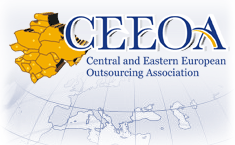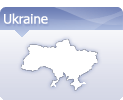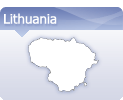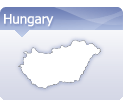Outsourcing to Ukraine: myths, reality and challenges
As the global IT industry spins up, showing immense year-to-year growth rates, and more innovative projects come by, outsourcing seems to be popular as never before. In the world where large corporations are no longer the only players, and smaller idea-driven companies blossom, outsourcing finds new meanings and evolution. Every dynamic business faces what’s called ‘the outsourcing dilemma’ at some point. Those who opt to outsource their IT activities, face another – even tougher dilemma – choosing the right outsourcing destination. Now named to the world’s top 100 most innovative service providers by Global Services Magazine and neoIT, Ukraine has been active in global outsourcing since early 1990s. Gartner’s “Top Outsourcing Destinations” has featured Ukraine since 2007. Last year the volume of IT outsourcing and software development services provided in Ukraine was estimated at US$1.5 billion. As Financial Times reported, the figure marked a tenfold increase over the last 10 years, with the sector booming at impressive 30-40 percent per year even through the chaos of the financial crisis. Even so, outsourcing in general and Ukrainian ITO in particular are surrounded by numerous myths. This article will dwell upon how these myths correlate with the real facts, and what are the business-related challenges that may occur when outsourcing to Ukraine. Knowing these may make a difference for any business, looking to outsource to Ukraine. Myth#1: Political turbulence makes outsourcing to Ukraine too risky/impossible. In mid-2013 President Viktor Yanukovych signed off on measures to support the IT sector, cancelling VAT for IT companies and providing Ukrainian software developers with considerable tax relief. The measure will continue throughout 2023. The conditions apply to system administration, operating systems, websites, online services and others. Challenge: Government support may indeed be soon coming at a cost of increased control, but the IT industry influence and lobby are powerful enough to minimize possible negative effect. The Financial Times report mentioned above also highlighted a yearly raise of 30-40 percent in the earnings by Ukrainian outsourcing companies. Neighboring European countries like Romania, Hungary, and Poland, where political systems are generally perceived as more stable, are getting just about half of Ukraine’s figure. Reality: A country does not get to global outsourcing top without to-notch professionals. Behind Ukrainian success on the global outsourcing scene – there are thousands of high-qualified specialists. They develop the industry infrastructure and uphold the “IT-friendliness” of Ukraine. ITO providers are attractive for young talented specialists and seniors alike due to the larger-than-average salaries across the industry. Companies have competition for talented professionals, which is undoubtedly a good thing for customers. Since ITO is a specifically ‘manpower-centric’, HR departments are employing the best practices of attraction and retention. Generally, transparent and efficient Western-style business standards are implemented across the board. Challenge: there is still a gap between classical education in Ukraine and real market needs. To bridge this gap between classical education and modern ITO market, many of outsourcing companies have established partnerships with leading universities across the country. According to a recent Association of Ukrainian Outsourcing Companies (Ukrainian Hi-Tech Initiative), Ukraine is the fourth country with the largest number of IT developers in the world with over 30,000 IT specialists. That figure was a fourfold increase in two years. Approximately 25 percent of young IT-related specialists are hired by local IT companies right after graduation; others get to work for foreign companies, primarily American or European. The biggest cities in Ukraine are also the biggest IT development centers, the major being Kyiv, Kharkov, Dnepropetrovsk, Lviv, and Odessa. Many IT professionals are fluent with foreign languages, as corporate culture nurtures the trend. On February 24th 2012, the Financial Times Foreign Direct Investment Intelligence Unit released their annual “European Cities and Regions of the Future 2012/2013” report, which studied 253 European cities and 110 European regions. The report featured seven Ukrainian cities topping the list of most cost effective destinations for investment. Myth #3: Outsourcing means “cheap and low-quality”. Challenge: Ukraine is the world’s 26th most attractive outsourcing location in the world. The industry is so dynamic that even the substantial amount of young professionals can hardly satisfy the demand. That can possibly cause an increase in salaries, and, thus – a rise in costs. Myth #4: Offshore teams cannot be trusted as much as a company’s own employees. Generally, ODC model is a win-win solution in terms of cost/process/resource transparency, property rights, and innovations. Myth#5: It’s far out of reach geographically and culturally. Challenge: as an exception, language can sometimes be a problem, but it hasn’t hindered us much. Banking can be a nuisance – some businesses are forced to establish a wire transfer relationship with Ukrainian partners using paper forms and a manual process. However, once the initial setup is done, they find things running smoothly. Key outsourcers to Ukraine Resume Immense industry growth demonstrates high global demand for outsourcing to Ukraine. Businesses across the world show interest and appraise the level of services they have been provided by their Ukrainian counterparts. During the last decades Ukraine has earned a reputation of a reliable and top-performing business partner and one of the best outsourcing destinations of the world. |













